




Electrical installations in both industrial and consumer buildings need to meet the new challenges of our growing power needs. To increase the energy efficiency of buildings, while at the same time integrating consumers into the load compensation, will mean that controlling the switching of electrical devices on or off according to external signals, such as time and consumption, will be vital.




www.new.abb.com/smartgrids/ smart-grid-technologies/smarthome-and-intelligent-buildings

Based on the Connected Building Platform from Bosch Software Innovations
The Bosch Smart Home range includes both Single System products and System Solution products. Test the range of smart solutions to understand how these products are able to assist you in your daily lives; offering additional comfort, security for peace of mind and
ASSA ABLoY is the global leader in door opening solutions, dedicated to satisfying end-user needs for security, safety and convenience. Since its formation in 1994, ASSA ABLoY has grown from a regional company into an international group with about 46,000 employees, operations in more than 70 countries and sales close to SEK 68 billion. The Group has a leading position in areas such as access control, identification technology, entrance automation and hotel security. www.assaabloy.co.uk/en/local/uk/
Designed to be offered as a service from the ground up. Enabling our channel partners – insurers, telcos and builders - to add value to their core business creating a more intimate relationship with their consumer and B2B customers. The Cozify

Editor Chris Hewett editorial@mebmedia.co.uk
Accounts Jay
accounts@mebmedia.co.uk Publisher Wayne Banks +44 (0)1622 201207 wayne.banks@mebmedia.co.uk



Manager Kevin Villa website@mebmedia.co.uk
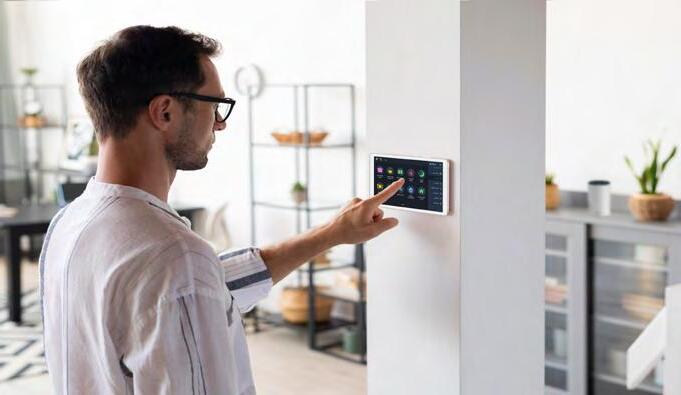
Design
Charles David production@mebmedia.co.uk


Green jobs are on the rise, as all areas of business take charge of sustainability in operations and decision-making like never before. Across industries, the mission to double down on sustainability is driving job growth and creating millions of new career paths, in sectors ranging from clean energy, construction, and manufacturing to low-emissions tech. The net employment prospects
are clear; the green transition could be the driving force of 30 million freshly created jobs by 2030. And businesses are all too aware that moving quickly could deliver big results, both in terms of the environment and business growth. Many are voting with their feet and showing real resolve to pivot at pace, but the reality is they need workforces equipped with the knowledge and skills to unleash opportunities a low carbon future can
bring.
Currently, the lack of skilled professionals isn’t keeping pace with the demand, but the silver lining in the tale is that there’s an enormous opportunity and a world of effective ways to turn that around and make sustainability part of the workforce. As Johnson Controls’ CEO George Oliver has acknowledged, we have the technology, financing, partnerships, and people to turn buildings from one of the greatest
challenges, into one of the biggest and quickest solutions toward net zero.
We often say that any serious initiative ‘takes a village’ to make it happen. But when it comes to net zero, it’s more truthful to say that it takes an army. As competition for talent heats up across industries, demand for qualified candidates is running at record highs.
Innovation in tech and its wide potential is grabbing headlines, pulling focus, and pushing the drive for sustainable talent to the top of the business agenda. There has been a surge in interest in the role next-gen green tech has to play in driving down emissions. The adoption and innovation of climate tech can deliver real solutions, combined with a trained and equipped workforce to deliver it.
When plotting the path forward, enterprises need employees who can help design and implement net zero strategies that deliver for the environment and the business. They
need skilled engineers to build, monitor and maintain these systems, and they need a broad range of skills in specialised areas such as solar and heat pump technologies.
As a £90bn industry that can be unlocked further, there is huge promise in the UK’s growing net zero economy, in connection with the country’s levelling up scheme across major UK cities and regions. It’s a unique set of circumstances spurring emerging interest in reskilling and upskilling programmes, with the goal of taking sustainability full throttle, plus the bonus potential of employee engagement and competitive edge.

To succeed, these new systems will need to be supported by better models, operations, and people strategies that empower workforces as agents of change. The good news is we don’t need to make the switch alone. Tackling challenges and building agility into a business’ DNA is an exercise in collaboration at its heart. Doing this effectively means change across workforces and operations. Despite the challenges we have a clear call to action: set a whole new standard through one powerful trifecta people, technology and processes.
A successful approach to upskilling takes a brand-new companywide way of working, and a full review of processes to ensure practical delivery. Beyond the operational changes, you need a collaborative workforce that understands the positive impact of sustainability, and the right tools to implement these new sustainable measures.
Bold upskilling plans start with a highly competent and passionate core team to champion the culture shift and set the right tone for company-wide buy-in.
The next step is all about taking a top-down mindset that involves all teams across an organisation playing their part in the process. Businesses that promote general sustainability competency and help employees combine their current functional skills with the necessary sustainability skills for their role are bringing all the parts of the process together and will be best positioned for success.
Green engagement for a green future
Businesses in the upskilling phase are aided by the core team of sustainability experts established in the mobilise stage. If they step
up their enablement efforts as they start to change the way the business operates, they can move quickly.

By utilising green partnerships with educational institutions, businesses can identify the skills and knowledge needed in the workforce and ensure that education and training programs are aligned with their needs for now, and the future.
Government plays a big role, too, by raising public awareness about the benefits of green jobs and the importance of transitioning to a low-carbon economy. This will help to create demand for green jobs and encourage more people to pursue careers in this field. Strong incentives include those to strengthen the focus on apprenticeship and internship programs within the green sector, and the significant reform to equip 11– 16-year-olds with the vital skills needed to implement effective green governance in the future. This is a vital age group, as one in three young people in the UK are concerned about both their futures and the successful transition to sustainability.
To support the younger generation who will soon enter the workforce or finish education, businesses can encourage practical,
on-the-job training and work experience for people who are interested in pursuing green careers. When evaluating a company's culture and values, just over one in four (26%) of the adults surveyed in by the WEF in Europe said that sustainability is one of their top non-negotiables. Professionals now have a strong and growing desire to work for an organisation that values the environment and where they can make a difference in combating climate change.
We know that young people are crucial to achieving net zero because they bring fresh ideas, methods, and viewpoints to climate change problems and solutions. Businesses must focus on utilising this talent pool and fostering skill development now because the need to innovate and explore technologies will persist in the years to come.
It’s also vital for businesses to open up new talent pools by leaning into upskilling and development that involves current workforces at every level, making them part of the solution and well positioned to capture the massive opportunities a low carbon future has to offer, and
upskill and develop their existing workforce to retain their best people.
While it's critical for companies to set an example and demonstrate their understanding of issues like diversity, ethics, and employee satisfaction, the greatest reward comes from having a real-world impact. Businesses can use their authority to promote and support sustainability goals both internally and externally.
Every level of an organisation should incorporate sustainability, especially into its objectives and practices. This can be done by informing the workforce and offering rewards, like compensation for C-Suite committees, in line with sustainability and diversity goals.
There is much work to be done, but every reason for optimism. We can quickly make employees an essential part of the sustainability journey. We have seven years to reach the 2030 milestone, and we can do it if we build the sustainable workforce now.
For further information please visit www.johnsoncontrols.com

Reinforces local skill development with 500 employees
Schneider Electric, the leader in the digital transformation of energy management and industrial automation, broke ground on its new smart factory in Dunavesce, Hungary. With a planned investment of €40 million, the new site will span 25,000 m2 and have a headcount of 500 employees.

The 36th smart factory in Europe, this will be the 22nd engeneering-to-order factory in the region, producing primary and secondary switchgears, low voltage cabinets and components, and state-of-the-art SF6-free AirSeT medium voltage switchgear range, all made-to-order to individual customers’ specifications.
From the first day of production, expected in 2024, the factory will be net zero. Geothermal energy and rooftop solar will power the site, and Schneider Electric’s EcoStruxure energy management solutions will maximize its energy efficiency.
In addition, the site will feature:
1. 30 electric car and 25 electric bicycle Schneider Electric charging stations
2. Rainwater will be collected for bathrooms and irrigation
3. Schneider Electric sensors in the offices, meeting rooms, changing rooms, and bathrooms will control the lights and air conditioning to reduce energy waste
4. Airlocks to prevent heat loss at truck-docking stations and at the entrance
“Europe is an important region for Schneider Electric,” said Frederic Godemel, Executive Vice President, Power Systems & Services, Schneider Electric. “This new smart factory is one example of how we are bolstering our capacity to meet the increase in demand as Europe accelerates through the energy transition and strengthens its energy independence.”
“The new Dunavecse plant will be a flagship factory in Europe for medium voltage technologies,” said Yann Reynaud, Senior Vice President Global Engineering to Order, Schneider Electric. “We’re excited to be building more capacity for our customers, so we can bring them even more innovation, sustainability, and digital solutions.”
This includes laboratories, cleanrooms, commercial kitchens, and industrial and pharmaceutical production facilities, all of which demand high-quality illumination delivered by a robust and durable luminaire.

Duoproof 2 ticks these boxes – with an LED panel that features a high level of resistance to chemicals and heat and IP65 protection against dust, dirt, steam and water.
A smooth surface, rounded corners and the impermeable join between Duoproof 2’s polymethyl methacrylate (PMMA) cover and steel housing also result in an optimised hygienic design that allows for quick and easy cleaning maintenance cycles.
But that’s not all. Here are just a few more highlights of Duoproof 2:
• High temperature tolerance: Duoproof 2 is suitable for use in high temperature environments up to 50°C
• Highly efficient: the luminaire can deliver up to 150 lm/W
• Excellent optical light distribution and recyclability provided by the PMMA diffuser
• Certification – Duoproof 2 is certified by Fraunhofer for cleanroom environments (ISO EN 14644-1) and Good Manufacturing Practices (GMP). It also has the Hazard Analysis and Critical Control Point (HACCP) food safety certificate.
Duoproof 2’s Product Manager, Felix Breuss, said, “Our new indoor luminaire is especially attractive because of the breadth of its application usage. In spaces with stringent requirements – such as pharmaceutical, medical or food manufacturing – this luminaire can be trusted to perform and endure.”
For more information please visit www.thornlighting.co.uk/en-gb/products/indoorlighting/recessed-modular-luminaires/DuoProof_2
Semtech Corporation (Nasdaq: SMTC), a highperformance semiconductor, IoT systems, and Cloud connectivity service provider, announces the expansion of its PerSe® product portfolio with the release of a new integrated circuit (IC) purpose-built for 5G mobile devices. Semtech’s PerSe technology senses human proximity and enables end devices such as smartphones to implement advanced radio frequency (RF) control. The PerSe Connect SX9376 enables designers to optimize RF performance, enhance connectivity and support elevated compliance with global specific absorption rate (SAR) standards for 5G-enabled consumer devices.
Semtech’s PerSe intelligent sensors have led the connected device market for the past decade, delivering always-on and highly responsive consumer experiences. The ability to enable automatic adjustment of system level RF emissions allows connected devices –smartphones, tablets, hotspots, and laptops – to operate at peak performance while maintaining compliance. The industry’s leading original equipment manufacturers (OEMs) design Semtech’s chips into their devices to deliver unrivaled consumer experiences through superior device performance, battery life, regulatory compliance and user safety.
“As the evolution of the consumer device market continues to accelerate, OEMs will continue to deliver connected devices that take advantage of the best available technologies to deliver the highest levels of performance, connectivity, and battery life that consumers demand,” said David Wong, senior director of consumer sensing products for Semtech’s Advanced Protection and Sensing Products Group.
“For ten years and counting, OEMs have been adopting our PerSe technology into their products so
that they can be sure their devices deliver the best performance while also maintaining SAR compliance.”
By 2030, the global 5G market is expected to grow at a 47.6% compound annual growth rate (CAGR) with a market valuation of USD 198.44 Billion.[1] To bring these 5G-enabled products to market, OEMs must add more RF antennas into the design to address the frequency increase. The additional antennas can make it challenging for OEMs to address global SAR compliance and accurately manage the device’s RF power. Semtech’s SX9376 has a maximum of 8 sensor inputs to support multiple antennas and simplify the sensor design without compromising performance and regulation. Semtech’s new chipset is also compatible with various antenna designs, making it easy to integrate into the latest 5G mobile devices.
Key benefits of the SX9376 in smartphones:
• Semtech PerSe Connect 9376 enables optimization of system RF performance to enhance connectivity and support global SAR compliance

• A maximum of eight sensor inputs to support multiple antennas
• Best-in-class sensing performance with highresolution analog front end (AFE) down to 0.74aF
• Extreme versatility to support antenna designs with up to 600 pF capacitance
• Superior robustness with advanced temperature correction to minimize false triggers caused by noise and temperature
• Single-chip, fully integrated solution to support all SAR sensing needs
Learn more about Semtech’s PerSe portfolio here











Honeywell (NASDAQ: HON) today announced that Verdantix named it a Leader in the independent research firm’s Green Quadrant for Integrated Smart Building Security Software. The recognition highlights Honeywell’s buildings leadership with its dynamic controls platform, strong buildings integration and optimized alarm management.
According to the report, Honeywell’s offerings can deliver value and unification for organizations in industries that need to integrate safety and facility operations with security, such as laboratories, hospitals, large industrial firms and retail complexes.*
“Being named a leader by Verdantix in their Green Quadrant further recognizes the capabilities of Honeywell’s solutions to optimize and enhance key buildings outcomes,” said Sadiq Syed, vice president and general manager of Connected Buildings, Honeywell. “This report points to our unique mix of offerings to enable organizations to achieve safer and more sustainable buildings.”
Verdantix underscores the Honeywell Command & Control Suite (CCS) and Enterprise Buildings Integrator (EBI) platform as valuable solutions for organizations looking to implement a standard interface and benefit from a uniform control system. The report points to Honeywell’s designs to accommodate global security operation centers and EBI’s capabilities as an extensible
integration platform to centralize a highly tailored security solution. EBI can connect to third-party cloud systems, is IoT-enabled and can leverage Honeywell Forge software capabilities for edge device integration and analytics.*
1. EBI is an integrated building management platform that helps connect, monitor and manage core building functions from comfort to security and life safety while helping to reduce upfront capital costs. The open IoT platform integrates with third-party systems and equipment as well as cloud and mobile applications.
2. CCS is a facility visualization application with an intuitive interface that includes enhanced map navigation and editing capabilities. It allows users including building owners and operators, up to first responders, to manage building systems from a single view – and even remotely – for improved operational efficiency and resilience.
EBI and CCS are part of Honeywell Forge for Buildings, a comprehensive approach to building system operations and management that helps building owners and operators improve performance and reduce energy consumption throughout facilities from a single point of contro

The IAQ multi-sensor from Siemens Smart Infrastructure offers a key contribution to room automation with a simple insight into room conditions that helps to prioritise indoor air quality and create a healthy and productive environment.

The sensor tracks seven key environmental factors in a single wall-mounted unit: fine dust (PM2.5), volatile organic compounds (VOCs), carbon dioxide, relative humidity, temperature, light and noise (dBA). The IAQ offers the same level of accuracy as individual room sensors, with an intuitive colour indicator to identify air quality status. Transparency in air quality is further ensured through an easy-to-read LED display, with a simplistic design that offers clear and quick indication of air conditions. This simplicity is carried through to the touch-sensitive buttons which allow easy scrolling through the sensor’s parameters.
The unit assists building owners and operators in meeting a range of environmental building regulations and certification requirements including WELL, RESET, LBC, FITWEL and LEED.
In addition to monitoring the air quality, the noise sensor (no recording) can detect the number of people in a meeting room.
Studies have shown that poor ventilation can account for more than 50 percent of all sick leave with poor air quality also perceived to reduce work performance by over 9 percent. The IAQ is one of a range of products from Siemens designed to optimise indoor air quality which is some 2.5 times more polluted than typical outdoor air. This range also includes Connect Box, an open and easy-to-use IoT solution which manages small to medium-sized buildings and can be simply connected to operate with the IAQ via wireless or wired protocols (BACnet and LoRaWAN).
Ease of installation is ensured through the sensor being suitable for use with most commercially available recessed conduit boxes.
Working together, the IAQ multi-sensor and Connect Box offer a highly efficient monitoring solution to increase health and comfort in small to medium-sized buildings without the need of a BMS system.
Pharmaceutical company Pfizer has opened a new high-containment manufacturing facility in Freiburg, Germany, using technology and services from Siemens to make it one of the most modern and sustainable of its kind. Potentially producing up to seven billion tablets a year for more than 180 countries, the plant uses an innovative containment concept - monitored and controlled by Building Services from Siemens Xcelerator portfolio - which ensures employee safety and results in a 40 percent reduction in energy use in its environmental control system, compared to a traditional facility.
Building management platform Desigo CC is the technology backbone of the facility’s smart building infrastructure, acting as a central control center to integrate multiple systems and devices, and automate processes. This enables systems to communicate and collaborate with each other, collecting and visualizing data from both the production process and the building in one place.
“All machines and processes are intelligently networked using information and communication technologies, which enables the Pfizer plant in Freiburg to produce more flexibly, faster and with less resource consumption,” said Gunther Bechmann, Senior Manager Operations Manufacturing, Pfizer Freiburg. “The constructive cooperation on this project has once again confirmed and expanded the existing partnership that the Pfizer plant has maintained with Siemens for years.”
“Our work with Pfizer on the new Freiburg plant is an excellent demonstration of how applying an intelligent mix of technology and services can produce exactly the right outcomes, even in a challenging
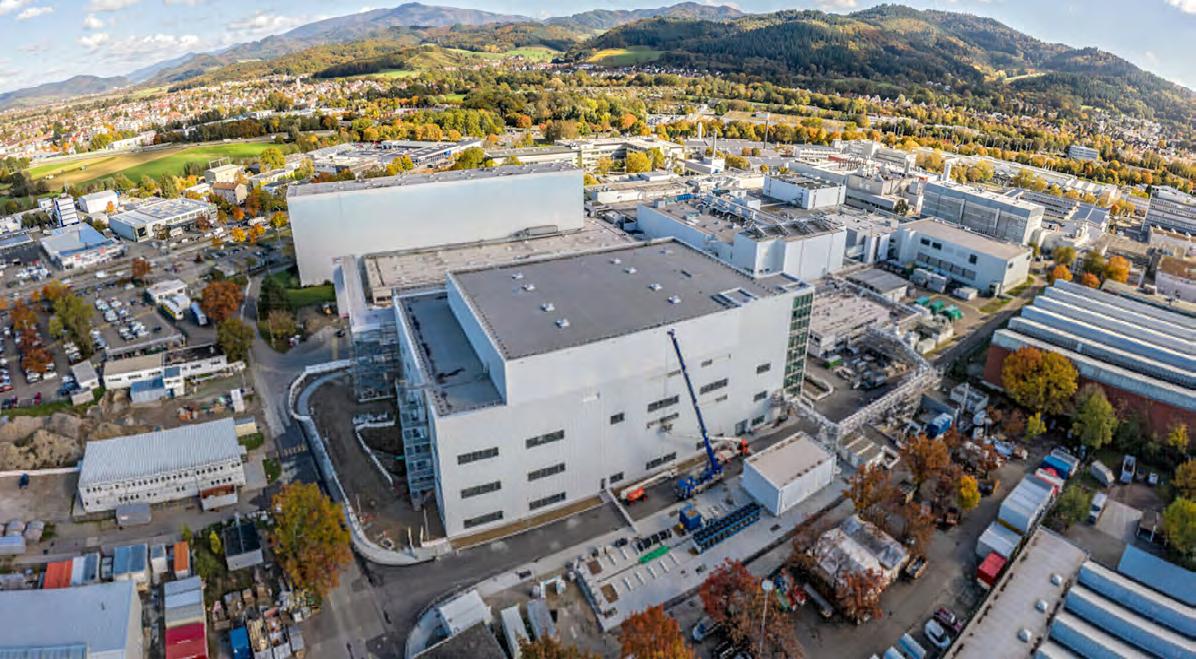
industry like pharmaceuticals, where speed, consistent quality and safety are all non-negotiable,” said Dave Hopping, CEO, Solutions and Services, Siemens Smart Infrastructure. “The result is a faster, more flexible and competitive facility, and a benchmark in ultra-modern, sustainable pharmaceutical production.”
Combining Desigo CC with SIMATIC WinCC - a scalable process visualization system - enables production-related data to be exchanged between the production systems and the visualization system. Data relevant to production from the building management platform is transferred to the supervisory control and data acquisition (SCADA) system, while information from other production systems can be fed into Desigo CC and used for predictive control functions in the building automation systems.
This connection allows building management data to be used in the central management system, and can be accessed at any time from individual production areas. Networking and visualizing data in this way enables the production facility to consume around 40 percent less energy than traditional plants in its environmental control, by intelligently controlling the air flow and temperature requirements in individual zones.
Forming part of Siemens Xcelerator, Building Services is a portfolio of onsite and remote services which improve the operation and maintenance of buildings, through data-driven, outcome-based service programs. Siemens Xcelerator is an open digital business platform to accelerate digital transformation, comprising a curated portfolio, a partner ecosystem and a marketplace to speed up value creation across industry, buildings, grids and mobility.
New Pfizer plant in Germany is 40% more energy efficient with Siemens technology and services
Switch and dim lights, call up lighting moods, save energy
Play music, control multiroom systems
Time-dependent control of blinds and shutters, monitor windows and doors
Analyse data and consumption
See who is calling, display camera images, secure building
Display energy consumption, turn power outlets on and off, save electricity
Control and monitor building technology from outside
Regulate heaters and air conditioning units automatically, heat in an energy-conscious manner
Synchronise calendars and time clocks, play occupancy simulations
Save energy, manage energy consumption, heat in an energy-conscious manner, protect the climate
Call up weather forecasts, use weather services
Monitor and automatically open and close windows and doors, secure building
Control innovative building technology via radio
Use door communication and keyless access control, secure building
Simulate occupancy, use timers, secure building
Intelligent building technology from Gira
New research from Watco has revealed that over a quarter (26%) of facilities management professionals feel stressed at work, amid growing industry challenges including a skills shortage, supply chain issues and pressure to improve the overall workplace experience.
It found that over 1 in 4 (29%) respondents have had an increase in their workload over the past year, and almost a third (28%) admitted that they often make mistakes as they have too much on their plate.
On top of this, a further third (32%) said that stress has ‘often’ made them feel like leaving their role. These realities pose problems not just to the smooth, safe operations of a facility but can also result in significant costs to businesses. The Health and Safety Executive’s (HSE) annual report in 2022 revealed almost 1 million workers in Great Britain suffering from a work-related illness caused by stress, depression, and anxiety. It also brought to light that stress-induced absences cost employers over £5 billion a year in this country.
On the latest research, Lisa O’Neill, Group Marketing Director at Watco commented: “We know that FMs cannot be expected to solve every challenge that they are facing. However, the research revealed a common result where tasks and responsibilities are getting more unmanageable. Therefore, shifting approach and incorporating simple tools such as a maintenance checklist can help to stop minor issues growing into big problems and ultimately, start to control ever-growing to-do lists. This can save money on repairs and free up time for the more complex tasks and priorities such as health and safety.”
The survey of 250 facilities management professionals also uncovered that despite the current difficulties in sourcing skilled workers and accessing EU
labour pools, reflected in the Institute of Workplace and Facilities Management (IWFM) 2022 report, less than a quarter of businesses (22%) are prioritising investing in the workplace experience, and over 60% of respondents reported that they do not feel valued by their employer.
Lisa continued: “Assessing the broader picture, steps must be taken to maintain the safe and smooth running of operations while navigating this skills shortage. FMs must support the employees they already have while working to improve the overall workplace experience. For example, taking steps to address workloads, offering professional development via industry resources, or demonstrating a commitment to safety regulations and legislation such as the Disability Discrimination Act, ensuring that the facility supports all employees in feeling both happy and safe.”
Revealing further sector challenges, the results indicated that only a proportion of FM professionals are prioritising as required to maintain smooth operations while navigating the ongoing supply chain disruption outcomes.

Ranking the top three priorities for their role, respondents revealed that only the minority included:
1. working effectively with different parts of the supply chain (21%)
2. controlling costs (14%)
3. keeping on top of admin, such as policy documents (14%)
For more information on the broader challenges facing the FM sector in 2023 and how to navigate these, download Watco’s free report here
Almost 1 in 3 facilities management professionals are making mistakes due to unmanageable workloads
A pilot project between ABB Robotics and US non-profit organization Junglekeepers is demonstrating the role Cloud technology can play in making reforestation faster, more efficient and scalable.

ABB Robotics is supporting Junglekeepers in their mission to protect 55,000 acres of Amazon rainforest and reverse deforestation. In a first-of-its-kind demonstration, ABB’s cobot YuMi is automating planting tasks in a jungle laboratory, speeding the process and allowing Junglekeepers’ volunteers to focus their valuable time and resources on more impactful work.
Through ABB RobotStudio Cloud technology, ABB experts simulate, refine and deploy the programming required for YuMi’s tasks in the jungle from 12,000 kms (7,460 miles) away Västerås, Sweden – enabling the world’s most remote robot.
“ABB’s collaboration with Junglekeepers demonstrates how robotics and Cloud technology can play a central role in fighting deforestation as one of the major contributors to climate change”, said Sami Atiya, President of ABB Robotics and Discrete Automation. “Our pilot program with the world’s most remote robot is helping automate highly repetitive tasks, freeing up rangers to undertake more important work out in the rainforest and helping them to conserve the land they live on.”
In a jungle lab, located in a remote region of the Peruvian Amazon, a YuMi cobot has been installed to automate essential tasks in the seed planting process, usually an entirely manual effort. The cobot digs a hole in the soil, drops the seed in, compacts the soil on top and marks it with a color-coded tag. YuMi enables Junglekeepers to replant an area the size of two soccer fields every day in zones requiring reforestation.
At the same time, by automating this task, Junglekeepers’ volunteers are able to focus their valuable time and resources on more impactful work, such as patrolling the area to deter illegal loggers, educating locals on the preservation of the rainforest and planting mature saplings.
Creating a fully remote and autonomous cobot installation also overcomes the difficulty of finding people willing to stay and work in the distant jungle location. After its initial installation, YuMi can carry out its tasks autonomously, with only trouble shooting as needed.
“As of right now, we have lost 20 percent of the total area of Amazon rainforest; without using technology today, conservation will be at a standstill,” said Moshin Kazmi, Co-Founder of Junglekeepers. “Having Yumi at our base is a great way to expose our rangers to new ways of doing things. It accelerates and expands our operations and advances our mission.”
The destruction of the Amazon rainforest through human activities such as logging and burning to clear land for agriculture are contributing to the devastating effects of climate change. It is estimated that more than 870,000 km² of the Amazon rainforest have been cleared since 1985, an area larger than France, United Kingdom and Belgium combined.[1] With tens of billions of trees already being gone, the region is warming fast.
ABB Robotics’ pilot project in the Amazon furthers its objective to contribute to sustainable transformation through intelligent robotics and automation solutions, supporting businesses to increase productivity, reduce waste and maximize efficiency. In 2022, ABB Robotics collaborated with the Parley Global Cleanup network, a non-profit organization collecting marine plastic waste, to create personalized designer items such as recycled furniture, using 3D additive printing. In accordance with the wishes of Junglekeepers, the pilot scheme in the rainforest with RobotStudio Cloud and YuMi will last for approximately six weeks (across May and June 2023). Following the conclusion of the pilot program, ABB will explore opportunities to assist Junglekeepers on a more extended basis as well as exploring further opportunities for its robotic solutions and cloud technologies to play a central role in driving sustainable transformation.







Rockwell Automation introduces FactoryTalk Optix as a new addition to their visualization portfolio. Known as “visualization for visionaries,” FactoryTalk Optix is a modern, cloud-enabled human-machine interface (HMI) platform that allows users to design, test and deploy applications directly from a web browser anywhere, anytime. Take advantage of new levels of collaboration, scalability, and interoperability to achieve your vision.
FactoryTalk Optix is designed to help improve your process, efficiency and deliverables. Gain unlimited options:
• Design options: Design and test your projects in a modern object-oriented programming environment.
• Deployment options: Create your application once and deploy to any device.
• Graphic options: Style your graphics to support a global audience and provide a responsive experience.
• Extensible options: Achieve openness and
interoperability through machine-to-machine and machine-to-cloud communications enabled by OPC UA, MQTT, IOT native connectivity and an open C# interface.
FactoryTalk Optix is one of the five core solutions in FactoryTalk® Design Hub™. Industrial organizations can now transform their automation design capabilities with a more simplified, productive way to work powered by the cloud. Teams of all sizes, skillsets and locations can work smarter through enhanced collaboration, improved lifecycle management and on-demand access to cloud-based software all while adhering to the latest security standards and information technology (IT) best practices. The result is increased design productivity, faster time to market and systems that cost less to build and maintain.
Click here to learn more about FactoryTalk Optix.
Deploying new technologies like battery energy storage systems (BESS) could help buildings get back on track with their emissions targets, say sector experts.
Recent reports have found that both the public and private sectors are going to miss their decarbonisation goals without further investment. However, BESS could help turn this around.
“BESS can provide some quick wins in terms of enabling electric vehicle (EV) adoption, optimising use of on-site renewables, and even using more green energy from the grid,” said Matthew Lumsden, CEO of energy storage experts Connected Energy.
“The focus for FM companies and landlords has rightly been on energy efficiency measures like LED lighting, but the next phase of electrification is going to reverse some of those gains and see building’s energy consumption potentially increase once more. Without measures like BESS, building emissions will also rise concurrently.”
The Public Buildings Energy Efficiency Report by Neos Networks found that CO2 emissions from public buildings need to fall five times faster if they are to meet the mandated target of 75 per cent reduction in CO2 emissions by 2037. Similarly, a study by Accenture found that 93 per cent of companies will fail to achieve their decarbonisation goals if they don’t at least double the pace of emissions reduction by 2030.
Battery energy storage systems act as energy reservoirs, storing power during quieter times to provide it during peak periods. There are several ways that BESS can help reduce emissions from buildings.
A common use case is to prevent the need for an expensive grid connection upgrade from the distribution network operator (DNO) - many businesses are
experiencing capacity issues as they expand their sites or introduce new technology such as EV charging and heat pumps. If a DNO upgrade will cost more than £200,000 then it’s worth looking at battery storage as an alternative.

BESS can also help optimise the value of rooftop renewables by storing surplus solar energy to make it available as required. This boosts the return on investment from renewables as you make better use of the green energy you generate. Crucially, if there is a large cost differential between the cost of energy export and import, then BESS can provide a real return on investment.
Even if a site does not have solar, a BESS can help decarbonise energy consumption. This is because it can be programmed to buy and store energy when the grid is producing high amounts of green power.
“There are not many technologies which can provide this level of versatility when it comes to different use cases,” added Matthew. “And increasingly BESS are available on financing or ‘as a service’ contracts meaning there doesn’t have to be a significant capital outlay to install them.”
BESS can be made even greener if they use second life batteries – this is when good batteries are reclaimed from end-of-life EVs and given a second life in energy storage systems. A system using second life batteries, such as Connected Energy’s E-STOR product, can provide carbon savings from the outset by reusing materials from an EV battery and doubling its lifecycle.
Connected Energy has produced a free white paper on BESS for buildings, which can be downloaded here
SMART
— SMART HOME
ABB-free@home®
ABB-free@home®
ABB-free@home®

Making home automation easier than ever.
Making home automation easier than ever.
Making home automation easier than ever.
There remain many misconceptions around implementing automation. Guidance Automation’s recent research identified the greatest perceived barriers to be the costs involved / budget constraints (76%), the need to up-skill staff (74%), and the belief that warehouse processes are too changeable (63%). But a further widespread myth is that a business may be ‘too small’ for automation. This is emphatically not the case.

As Dr Paul Rivers, Managing Director of Guidance Automation explains, small and medium-sized enterprises (SMEs) shouldn't be
left behind, and instead, can level the playing field by embracing automation with an approach that best suits their business needs.
The SME Market SMEs are the backbone of Europe’s economy, representing 99% of businesses in the EU and employing over 100 million people. Specifically in the UK manufacturing sector, there are over 130,000 SMEs who are all leading the way in innovation – with research highlighting that SME manufacturing output grew at the fastest pace on record in the three months to July 2021
However, both SMEs and larger
organisations continue to face the same logistical challenges – from increasing material and labour costs, to a shortage of skilled resources. And particularly for SMEs, it can be more challenging to attract workers – especially while the country faces a large skills gap within manufacturing. Yet, these hurdles can, to an extent, be overcome by beginning to embrace automation – whether it is through a gradual or flexible approach, such as implementing one or two robots or renting autonomous vehicles –allowing SMEs to start to reap the benefits without overhauling existing processes.
Additionally, SMEs have the upper hand. With agility and flexibility on their side, SMEs can capitalise on their ability to pivot quickly and make decisions, such as deploying innovative technologies, without having to go through as many hierarchical levels for sign-off. Therefore, the key question remains – what is stopping them from leveraging the benefits of automation?
Automation is transforming industries around the globe – yet in the SME market, 57% of manufacturing leaders feel that they aren’t confident with technology, and are falling behind in terms of digital adoption. Despite hesitancy, the use of automation in the warehouse holds great potential for SMEs – including improved labour allocation, enhanced

productivity and reduced errors. With the right technology in the right place, SMEs can automate mundane tasks – releasing the workforce to be upskilled and take on more advanced, value-added jobs and better manage process changes as they arise. For example, taking a collaborative and cost-effective approach, one or two robots can be added to any size manufacturing business without the need for disruption, while delivering business improvements – reallocating staff to more profitable areas and allowing the robot to undertake the repetitive labour. This is particularly beneficial for the small-to-medium business market to improve job satisfaction, and in turn, labour retention.
While different levels of automation exist, today’s smaller businesses
may not necessarily understand how automation could benefit their organisations, as 62% of respondents to the Guidance Automation research indicated, or how it can fit into existing processes. The survey also found that 58% of respondents believed that the nature of change when embracing automation would be both sudden and rapid. But there is no need to ‘rip and replace’ existing processes, which can result in significant business disruption. Instead, SMEs can realise the benefits of automation with a gradual or flexible approach.
Firstly, it is key to identify the right opportunities for automation, which can deliver immediate gains. To begin this process, SMEs should partner with an automation expert to undertake an assessment of their current warehouse or production facility in order to assess and
advise on the viability of the project. An expert will be able to identify possibilities of where automation can be added, and the benefits and efficiencies that can be gained.

Once the most appropriate processes and matching technology have been identified, a logical next step is to consider a trial period, allowing staff to go through a ‘learning phase’ of working alongside the technology, while also demonstrating the benefits; from improved operational speed or increased efficiency. By ‘trying before you buy,’ SMEs can realise how easy and intuitive the automation process can be; how they can improve their operations; as well as how and where automation and humans can work together.
While reducing barriers to
implementation, flexible (e.g. opex as well as capex) and gradual approaches to automation also enable SMEs to be able to cope with any fluctuation in the business, particularly during busy or peak seasons. This approach removes the need for investments in expensive and fixed infrastructure, and alternatively, businesses can add more robots or ‘cobots’ (collaborative robots) as they require, removing the need for seasonal staff, while meeting demand. This comes in line with results from Guidance Automation’s recent research, as both low operation costs (35%) and increased productivity (31%) were identified as the most desired benefits of using Autonomous Mobile Robots (AMRs). With the ability to start small and scale up, automation
is achievable with minimal disruption and upheaval.
Conclusion
The cost and disruption of automation has previously made implementing new technology a challenge for manufacturing SMEs. But as robots and AMRs continue to become more accessible and cost-effective, small-to-medium businesses should consider the long-term benefits of investing in automation. By partnering with an automation expert and undergoing a small-scale trial, SMEs can understand how automation can be embedded in any organisation, of any size, to create an efficient and flexible working environment – that can also help them to remain competitive against their larger counterparts.









Alongside other automation technologies, robots are helping with productivity and efficiency. But the UK still lags behind other G7 countries on its adoption of industrial robots. Neli Ivanova, Head of Sales, Asset Finance, Siemens Financial Services (SFS) in the UK explores how specialist finance can

help support investment to keep UK manufacturing world-leading.
Automation is changing the face of global manufacturing and this is, in large part, driven by widespread adoption of industrial robots. These robots support more efficient, precise and flexible processes. On the factory floor the latest robotic automation technology performs a range of
manufacturing tasks – welding, cutting, assembling parts, labelling, handling raw materials, product packing – using sensors, controllers and actuators.
The automotive and F&B sectors are the UK’s largest purchasers of automation technology respectively according to the British Automation and Robot Association (BARA).
Automotive manufacturers, for example, can use robot grippers in modular production strategies to streamline assembly with incredible accuracy. Assembly lines are then easily adaptable to different vehicle variants making for a more efficient and flexible process. When it comes to sustainability much can be achieved by designing manufacturing processes to be less energy-hungry, less wasteful, and lower impact – and this includes at the smaller scale with intelligently implemented robots.
In F&B sales of individual robots sold to domestic manufacturers in the sector have been steadily on the rise, the industry saw a 21% increase between 2020 and 2021. Things have moved beyond the days of just end-of-line palletising, picking and packing. Manufacturers are now also making use of more advanced robotics earlier in the production process reducing errors and boosting throughput. In the packaging of delicate products like soft fruit for example, better gripper
and vacuum technology has led to consistent quality and minimal waste.
It’s no surprise then that take-up of robots in global factories reached an all time high in 2021 according to the International Federation of Robots’ (IFR) latest World Robotics report. Well over 500,000 new industrial robots were installed, reflecting a growth rate of 31% yearon-year – well above pre-pandemic levels.
However, the UK lags well behind the adoption trend with installations down 7% and robot density the lowest of all the G7 nations. This contrasts sharply with the whole of Europe which saw a 24% increase in installations led by Germany (28%), Italy (17%) and France (7%).
Given the UK’s longstanding and robust manufacturing presence, manufacturers must consider the risks of delaying investment in robotic automation technology. If the gap continues to widen, UK businesses may lose the edge to their European competitors.

As argued by MAKE UK – The Manufacturer’s Organisation “the technology to turn the situation around already exists and the opportunity is significant.” In fact, a report from the UK government identified that the application of automation and robotics in UK industry could contribute £6.4 billion to the UK economy by 2035. However, even greater take-up of the technology would encourage further growth and contribute to improved industrial resilience, the creation of new roles along the supply chain and international competitiveness.
Affording the investment amidst challenges Geopolitical dynamics, supply chain disruptions and inflation are putting pressure on manufacturing economics. At the same time, the manufacturing industry across the globe is expected to invest in more sustainable technologies in order to meet climate targets. Manufacturers are facing a dilemma – their desire to invest in (and gain the benefits
of) digitalisation is combined with a reluctance to commit capital against a backdrop of volatile markets and economic uncertainty.
FSME manufacturers especially may be deterred bythe sheer scale of capital expenditure required to adopt new technologies. That’s why smart financing solutions will be essential to accelerating this transformation and helping manufacturers move forward in their digitalisation and
sustainability journeys.
Such techniques can step in and help bridge the gap between what a manufacturer can invest, and what is needed to see meaningful return on investment.

Smart financing is offered by specialist financiers who have a deep understanding and knowledge of the industry and relevant technology, and can enable the acquisition of technology and equipment for competitive advantage in a financially sustainable way, tailored to an organisation’s business and cash-flow needs. Specifically, smart finance makes investments possible and affordable by aligning costs with revenues.
Additionally, it offers three major advantages over generalist finance:
• Technology expertise - which leverages deep understanding of the technology & how it is applied in practice, plus the benefits & return on investment it delivers in real - world applications
• A breadth of financing solutions - which offers a true spectrum of financing products and solutions which can be flexed & customized to fit each organization's individual circumstances and
• Smooth, sophisticated processes - which put customer experience at the centre – delivering speed and ease, supported by digital tools, and availability of specialist experts
Robotics are already a staple of the manufacturing space, making processes faster, more efficient, and more agile. For the UK to remain at the forefront of industrial production further investment in robotic automation technologies is not only essential but urgent. While the initial costs of investment may be off-putting to some, smart finance is available to bridge the gap. With the help of specialist financiers like Siemens Financial Services, manufacturers can acquire new technology and maintain their competitive edge.


In a tough economic market, slow and inaccurate picking can wipe out margin, especially when errors contribute to expensive returns. Staff shortages are adding to inefficiency and workplace stress, making it vital to create a more attractive working environment, preferably one that minimises heavy lifting and enables staff to be quickly productive.
Retail and logistics businesses recognise that automation improves the effectiveness and accuracy of warehouse operations. They know
it can improve responsiveness and reduce costly picking errors, while also enhancing day-to-day staff experience, safety and well-being. Yet far too many companies have held back from embracing automation due to a fear of business disruption and a lack of available investment funds.
The good news is that automation doesn’t have to be disruptive or expensive. From Autonomous Mobile Robots (AMRs) to Pick-to-Light solutions and Warehouse Execution Systems, with the right approach, companies can embrace automation

step-by-step, adding value and building confidence with every small change. Dr Paul Rivers, CEO, Guidance Automation explains how to get started with automation.
Empowering staff productivity
Operational effectiveness can be influenced by a range of factors, but in 2023 the key issue for the majority of retail and logistics operations is staff: their recruitment, retention, well-being and productivity. The challenges associated with retaining and recruiting staff are well
Retail logistics automation has never been more important
documented. In addition to seeking help from the government to address the estimated shortage of 60,000 drivers and warehouse operatives, many businesses have been compelled to increase salaries, with one discount supermarket increasing its hourly rate for warehouse workers by 20% over the past year.
Furthermore, retailers and logistics companies are increasingly aware of the need to improve safety and well-being within a highly physical environment. Not only are companies under pressure to comply with regulatory demands for employee health and safety, unless the warehouse environment experience improves, companies will struggle to attract new staff.

Add in the continued impact of global inflation and supply chain disruption, and retailers are under enormous pressure to achieve new levels of efficiency and cost effectiveness from existing operations.
Power of Automation
Automation provides a chance to
address a range of operational needs:
Transforming productivity: Autonomous mobile robots (AMRs) can reduce the time spent by workers walking around the warehouse facility. Indeed, AMRs are incredibly flexible, with add-on options, such as picking arms, barcode readers, cameras or grabbing mechanisms, meaning they can be deployed in different areas of the warehouse as required. Software solutions such as Warehouse Execution Systems help to optimise operations and Pick-toLight technology can transform the speed and accuracy of stock picks, improving responsiveness and reducing the costs associated with unnecessary product returns.
Improving staff well-being: Manual handling injuries are still surprisingly widespread within retail, with around one million working days lost due to handling injuries every year. In addition to the impact on staff, this is a significant business expense: what is it costing in delayed order fulfilment when staff
are off sick or have to be replaced by temporary staff? Automation can radically reduce the need for employees to carry heavy items, as AMRs take over much of the heavy lifting and carrying. By reducing the physical demands on staff, a company not only cuts the risk of injury but also frees up staff to undertake added value roles – such as quality assurance. Together these changes can make the working environment more accessible to a broader pool of potential talent.
Improving seasonal agility: Adding robots also provides contingency, especially at peak season, with the chance to rent additional units giving retailers a quick, low-cost way to scale up resources. In addition, the simplicity of Pick-to-Light systems, where lights guide staff to the right location for each pick or put, means that staff require minimal training to become productive. Even occasional agency staff can be as effective, efficient and accurate as long- standing employees.
The good news for companies is that these technologies can be added without disruption or upheaval. It is a simple process to add one or two AMRs into one area of operation to reduce the amount of time spent walking by humans. An AMR can be used at the end of an aisle, for example, to then transfer goods to the packing area, allowing staff to concentrate on picking rather than walking miles around the warehouse. There are no complex integrations to worry about. An AMR can be summoned by an individual pressing a button when the goods are ready to be moved; or triggered by a simple light beam.
Not only can this automation be introduced seamlessly to the existing set up, but AMRs can even be trialled without cost with the right business partner. The only change that may be required is to clean up the environment: while AMRs can
navigate around empty boxes and polythene shrink wrap, they will have to slow down to avoid these hazards, thus reducing their overall efficiency. Training staff to tidy up as they go is a valuable step in achieving a more effective human/AMR operation.
Once a company has experienced the ease with which an AMR or two can work side by side with human staff, the business may then evaluate the benefits of adding Pick-to-Light to reduce the error rate and improve efficiency. Or think about adding warehouse execution to further automate and optimise tasks. The entire automation journey can be achieved step by step, reflecting a business’ needs and investment options – with the added benefit that the entire organisation gains both incremental benefits and technology confidence.
Automation is becoming essential.
When retail competitors can achieve a business model that is not only far more responsive to customer needs, but also at a lower cost base, the pressure to adapt is growing fast. And for any company struggling to work out where to prioritise, there is help available. Working with a partner who can assess the current operational environment and suggest where an AMR could reduce human miles or take on the heavy lifting, or why Pick-to-Light could resolve picking errors, can help to refine plans.
With the addition of a free AMR trial, concerns regarding both cost and disruption are addressed. Retail and logistics operations can confidently explore the power of automation to support the existing human workforce to be both productive and safe. It’s time to get started on automation.

Axis network speakers are complete high-quality audio systems in a single unit. And because they’re based on open standards, they’re easy to integrate with other systems. Our ceiling and cabinet speakers are perfect for public address system and background music in stores and other settings, such as schools. And with our horn speaker you have a cost-efficient way to deter crime by complementing your video surveillance solution in outdoor settings.
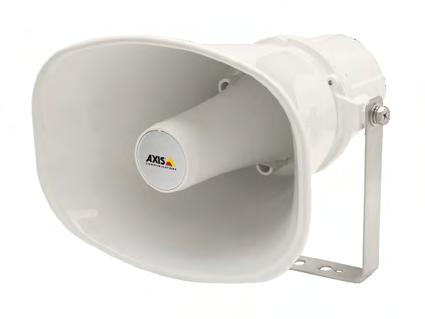




Learn more about our network audio systems at www.axis.com/products/audio
 AXIS C3003-E Network Horn Speaker AXIS C1004-E Network Cabinet Speaker
AXIS C2005 Network Ceiling Speaker
AXIS C3003-E Network Horn Speaker AXIS C1004-E Network Cabinet Speaker
AXIS C2005 Network Ceiling Speaker
According to international market research firm, Fortune Business Insights, the smart automation sector is estimated to increase by around 20% between 2021 and 2028 (https://www. fortunebusinessinsights.com/ industry-reports/smart-homemarket-101900). The growth in demand is coming from both the
commercial and residential sectors, and a rising number of end users are seeking integrated solutions that combine the convenience and energy-efficiency of smart automation with security.
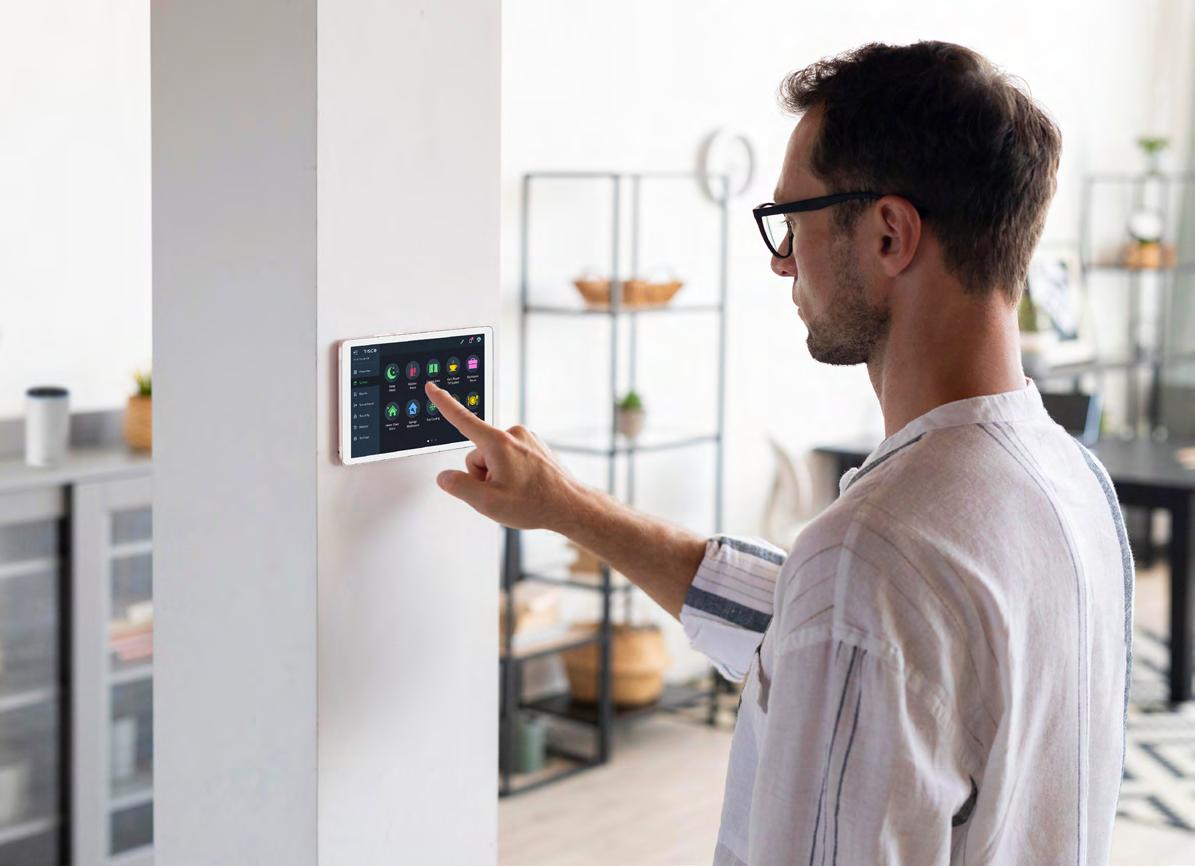
The ongoing cost-of-living crisis is unfortunately perpetuating a long-standing perception among many buyers that robust professional security systems are preferable
rather than necessary, with many residential property owners still opting to install low quality DIY products themselves.
Yet a new wave of professional integrated security alarm and smart automation solutions are providing installers with the opportunity to offer end users a cost-effective system, amalgamating smart automation with an enhanced level of
security.
These new integrated solutions also provide customers with a superior degree of security to that offered by autonomous security systems. Users may create event rules, whereby intruder detection triggers a series of “proactive protections” such as the switching on of outdoor lights, that deter burglars from attempting to access a building. They may also establish time-scheduled rules designed to make thieves believe that a vacant property is occupied, programming the system to turn lights on and off at certain times of day.
Integrated scenes can be preconfigured, not only saving occupiers time when they leave a building, but also precluding security omissions caused by human error. At the point at which a property is vacated, the security system automatically locks doors, windows and gates, generating peace of mind.
Installers too stand to gain a great deal from integrated solutions, not least the opportunity to expand their offer to include security as well as smart automation. It is quicker and easier to fit a single combined system than autonomous products, and cost-effective projects help installers to achieve healthy margins even within the context of the cost-ofliving crisis when end user budgets are squeezed.
The comprehensive new solutions require contractors to carry only a relatively small amount of stock, which both enables them to save on storage space required and facilitates a simpler, swifter procurement process less vulnerable to the vagaries of a supply chain which in some areas has yet to fully recover after the global pandemic.
Contractors also make savings in the time it takes to train their engineers in the correct and efficient installation and maintenance of equipment, providing instruction on one product instead of two.

The number of integrated systems available on the market is growing, and the choice can be bewildering, especially for smart automation installers new to the field of security. But by following a few simple guidelines, contractors can make the decision-making process easier and less time-consuming.
Integrated solutions manufactured by security specialists tend to feature high-level security as the bedrock of their functionality. They provide installers with the opportunity to offer their customers a professional system, fully differentiated from lower quality options available on the DIY market. Many of these producers stock a range of compatible devices such as locks, lights and garage doors, facilitating ease of purchase.
The best manufacturers will also be able to provide installers not only with reliable after-care, but also comprehensive – and in the best cases, bespoke – online and face-to-face training for their engineers, designed to enable them to fit and maintain the solutions with effectiveness and efficiency. As well
as allowing installers to guarantee the cost-effective delivery of efficacious systems, robust product training helps to enhance their engineers’ capabilities. By offering enrichment opportunities to their staff, installation firms can help to boost their employees’ level of job satisfaction and so too their loyalty; this is of particular importance while the UK continues to face a shortage of engineers.
It is vital that contractors select a security alarm of the correct grading, reflecting the value of a property’s contents and the associated risk of intrusion. Not only is this necessary to safeguard contents and people, but it is also vital to meet the criteria stipulated by insurance policies. Security grades begin at one and rise
to four for the highest risk facilities. Open-source solutions present a series of advantages over proprietary ones, facilitating easy integration with customers’ existing devices, irrespective of brand. They also allow flexibility in the future expansion of combined systems, enabling installers to select devices that meet their customer’s needs precisely.
Scalable products allow the efficient increase of the number of zones covered, permitting straightforward adaptation in the event of property evolution or extension or the incorporation of new buildings.
Installers should look for a solution that connects the controller to the alarm via Bus, the most flexible wiring topology available. Bus enables devices to be quickly and easily wired in a single-line “daisy-chain” protocol in addition to

or in place of a conventional “star” layout, minimising the quantity of cabling and zone expanders required. Our customers have made time and material savings of up to 75% on projects incorporating this protocol. Ultimately of course, installers want to be able to provide their customers with an exceptional user experience that will not only meet their immediate needs but also encourage repeat business and referrals to friends and business associates. Ease of operation is a big part of this, and integrated solutions that enable residential and commercial users to effortlessly manage security and smart automation remotely from a single control panel and via app permit simplification of their daily routines. And of course, voice activation control is rapidly becoming an expectation rather than a preference. Earlier this year, RISCO utilised
its 45 year experience in the manufacture of security solutions to create the RisControl Controller for Alarm and Smart Automation, an integrated security alarm and smart automation solution for commercial and residential installers that may also be supplied as a standalone automation controller.
RISCO has a national distribution agreement with leading global security distributor, ADI Global Distribution, and on 29th September, ADI will host a webinar for installers keen to discover more about the operational scope and business benefits of adding combined systems to their portfolios, as well as technical advice.
For further details please visit www.smarthome.riscogroup.com
Providing the critical link between Government and end-users, International Security Expo 2023 will showcase cutting-edge security innovation alongside the latest insights and policy discussions from key industry figures, plus not to be missed networking opportunities.
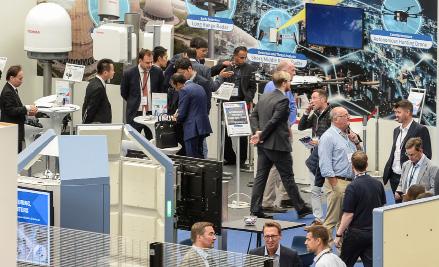
SECURE YOUR FREE PASS!
10,000+ HIGH-LEVEL SECURITY DECISION-MAKERS

350+ INTERNATIONAL EXHIBITING COMPANIES
CPD ACCREDITED LEARNING LIVE DEMONSTRATIONS


Sustainability has become a pressing issue in warehouse management in the past decades. Reducing the environmental impact of operations is a multifaceted challenge that can be overcome by improving process efficiency. In many cases, this is achieved by implementing warehouse automation. Efficient, automated processes enable reduced energy consumption, fewer emissions, and more compact facilities. However, by choosing an automation partner that champions
sustainability, warehouse operators can truly maximise these benefits.
Hans Jongebloed, Senior Postal and Parcel Expert at Prime Vision, a global leader in computer vision integration and robotics for logistics and e-commerce, looks at sustainability challenges facing warehouses and how the company reduces environmental impact.
A good place to start on the journey to a sustainable warehouse is the
facility itself. Solar panels, modern insulation and choosing a renewable energy supplier can greatly reduce the carbon footprint of operations. Placement is another factor to consider. A giant warehouse in an area of outstanding natural beauty is obviously undesirable from an aesthetic and ecological viewpoint, but logistics also play a part. Locating a compact warehouse in an optimal area for local deliveries, with good road connections, away from nature hotspots, minimises environmental damage and traffic pollution.
Sustainability also applies to people. Thankfully, the days of warehouse workers walking miles carrying heavy loads week in week out are almost behind us. With robots and other material handling solutions, personnel are no longer subjected to this level of manual labour, ensuring a happier, healthier workforce.
While these sustainability goals can be attained, a particular industry challenge illustrates how warehouses can further improve the efficiency of operational processes to reduce environmental impact.

We’ve all indulged in clothes shopping at some point, and many of us choose to do it online. However, while a prospective outfit can be easily tried on at the store, e-commerce customers must do it at home, presenting warehouses with a big sustainability problem: returns.
It is estimated that in the UK, more than a fifth of all clothes bought online every year are returned, while in the US, one logistics company
posited that the CO2 cost of returning e-commerce purchases was similar to the output of 3 million cars.[1]
Returns are a big sustainability issue for e-commerce, as they constitute a high volume of products swimming against the stream of the normal shipping process. First, the item needs to travel back to a distribution centre (often different from where it came from) which incurs transport emissions. Then, it is a long, cumbersome manual procedure to identify the product, check the condition and sort it properly. This often requires large numbers of personnel, generating extra CO2 from commuting. If an item can’t be recycled or resold, it ends up in landfill, producing unnecessary waste. Needless to say that in the era of unlimited free returns, all these processes can also create extra costs for sellers.
This is clearly an area for improvement. However, enhancing the efficiency of the process flow offers a solution not just for returns, but any warehouse operation.
Naturally, automation is one of the main answers to this efficiency challenge, and thankfully, increasing efficiency always has a positive impact on sustainability.
Using the returns example, being able to quickly check products with computer vision systems, transport goods to appropriate areas for resale or recycling with robots, plus spot trends and areas where processes can be improved with analytics software can greatly expedite operations. Furthermore, it requires less personnel to function. By harnessing renewable energy to power automated equipment, warehouse operators can also mitigate the impact of the electricity demand, delivering these efficiency benefits sustainably.
Automating warehouse processes in this manner allows fulfilment and returns to be conducted on a reduced timeframe, within a more compact site, all while minimising emissions, energy consumption and, effectively, lowering the operating costs. This
means that sustainability goals can be met at every level of operations. However, choosing the right solutions can also bring additional benefits.
Prime Vision is working to not only provide products that enable the efficient, sustainable running of warehouse operations, but is also reducing the carbon cost of the solutions themselves.
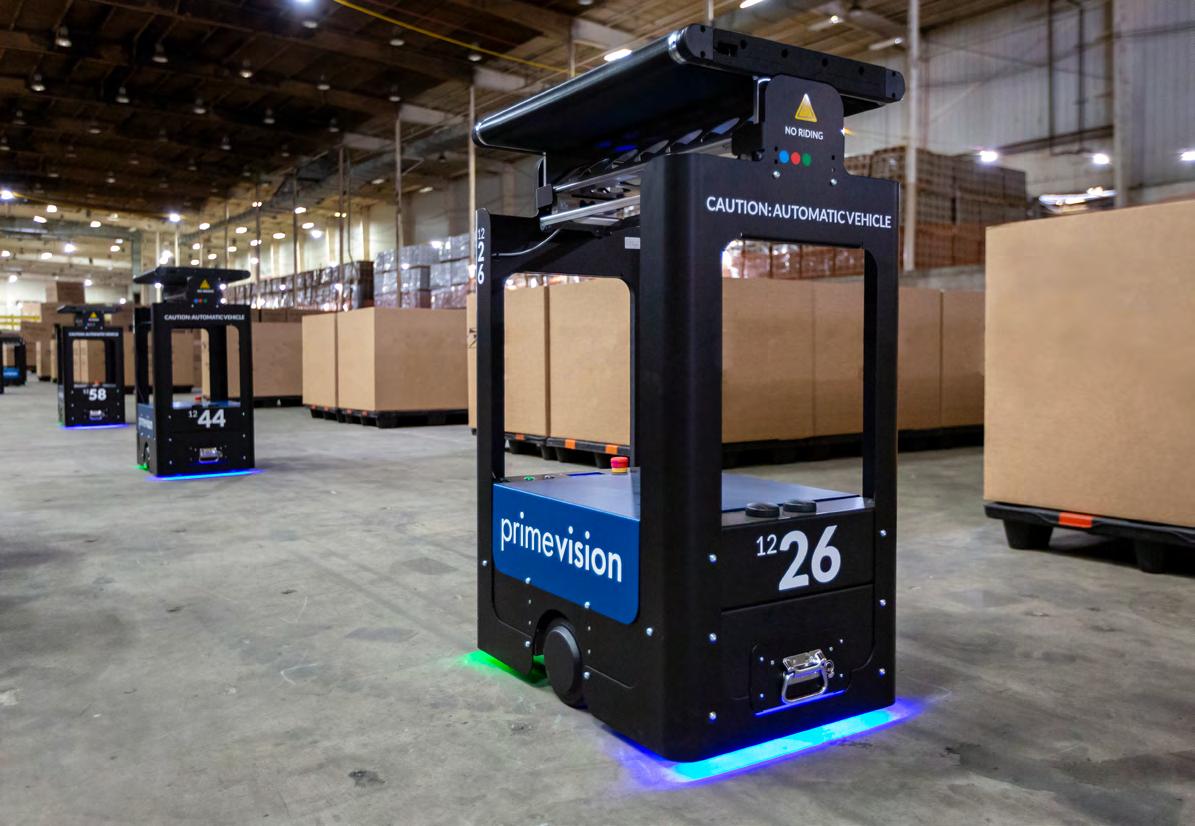
Robots are a critical component of a modern automated warehouse but are complex pieces of equipment that are intensive to produce. Consequently, Prime Vision focuses on reducing the impact of maintaining robots. A repair rather than replace approach helps improve sustainability, but when a robot is irreparable, Prime Vision rescues as many parts as possible to be used as spare components. Good-quality parts are fitted to other robots or used for in-house research - effectively recycling the components. Inspections identify and separate sub-par components, so there is no risk of fitting the robots
with inferior parts. Localised repair facilities further ensure that spares and maintenance personnel can reach customers without generating the excessive carbon emissions associated with long distance travel. Software is another area of focus. Maintenance can be carried out remotely, so nobody needs to drive to site to carry out updates. Prime Vision also continually optimises its software to run more efficiently, which reduces the number of servers required. Expanding on hardware, helping customers to collate facility computing power in an optimal, well monitored space can save additional energy during installation and operation. Prime Vision applies new IT developments too, such as hyper-converged infrastructure. Such cloud-style solutions with high scalability and efficiency can eliminate the need for large quantities of servers on-site, allowing customers to downsize infrastructure while adding the required flexibility.
Ultimately, to save the planet, the
whole supply chain must work together to achieve the most sustainable logistics operations. This includes cooperation between warehouses and the companies that supply automation solutions to them. While the increased process efficiency enabled by robots, computer vision and analytics software can greatly reduce the carbon footprint of warehouse operations – there is the provider to consider too.
Prime Vision is dedicated to reducing the environmental impact of its products and operations. A dedicated sustainability team continually assesses carbon footprint, identifying focus areas and actively lowering company’s emissions. Along with its solutions, this ensures that while Prime Vision contributes to improving the sustainability of warehouse operations, like its customers, it is also working on reducing the impact of the overall supply chain.
For more information, please visit https://primevision.com/

The safety of the air we breathe should be our greatest concern. Current statistics create a dire outlook. According to UNEP, air pollution is ‘the greatest environmental threat to public health globally.’ The organisation has reported that it is responsible for around seven million deaths per year. In the UK, 28 000 to 36 000 annual deaths are attributed to air pollutants.
Statistics like these demand urgent action. Around the world, it is estimated that nine in ten people are breathing air that exceeds the World
Health Organisation’s recommended guidelines regarding pollutants.
Smart air monitoring solutions have the potential to address many of the issues associated with future planning and strategy around air pollution. From individual response to government policymaking, it is time to get smart about air quality. Smart solutions like those available from Smarter Technologies Group are creating transformative processes through IoT smart technologies.

The effects of air pollution on human health are well-documented - and
evolving. Respiratory problems have long been linked to air pollution. In more recent times, studies have shown effects on heart health too.
Vulnerable communities often suffer the most from the effects of air pollution. Factors like periods of exposure, types of pollutants, and pre-existing health conditions all have a bearing on the health-related effects of air pollution. Effects can be short- and long-term - and even fatal.
Beyond human health, the environment is also put at risk by air pollution. It is something of a vicious circle. Energy use and production are the major man-made causes of
air pollution. However, air pollution not only causes climate change; it accelerates it too.
The challenges of air pollution are evolving - and the environmental emergency, in turn, exacerbates public health worries. When air pollution particles return to the ground, they contaminate water sources and soil, affect plant (and crop) health, and impact entire ecosystems.
Additionally, there is an economic price to be paid for air pollution. The World Economic Forum has said that air pollution has a $2.9 trillion cost. Generally, these costs include health-related losses, the impact on productivity and infrastructure, reduced crop yields, and increased need for welfare.
Understanding is the cornerstone of meaningful change.
Essentially, this is the power of smart technologies. By collecting data on internal and external air quality, citizens and authorities are empowered to plan and react according to real-time insights.
Smart technologies help to identify the source of pollutants and monitor this over time, which provides scope for positive changes. It also provides insights for authorities to deal with individual causes of pollutants more effectively both in the immediate and long term.
Smart buildings also have the ability to monitor energy consumption and emissions, with data providing tools for better control and adapted behaviours. At a granular level, this has the potential to address the causes of air pollution.
In the context of smart cities, these technologies will work towards providing more sustainable urban environments. Through a network of IoT sensors and gateways,
authorities, industries, and individuals will have the information they need to understand the sources of air pollution, detect undesirable changes, and react to alerts in real time.
Within the broader smart city environment, smart air quality monitoring will be one component in an ecosystem of data sets being monitored for improved sustainability and green transformation.

Smart strategies for more effective air quality management and policy making
Source detection creates potential for correction. It all starts with the identification of hotspots and high pollution zones. Immediate actionability and citizen response is the first step. This has the potential to make a tremendous difference to vulnerable members of our communities who are most at risk from air pollution.
In the long term, it creates opportunities for data-driven policy decision-making, data-based studies,
and more impactful regulation. By collecting and analysing data over time, policymakers are best able to craft regulation according to actual conditions. They are also positioned to report on the effectiveness of regulation with detailed metrics. This has the potential to reduce the ‘trial and error’ approach.
Our cities are exploding. According to the World Economic Forum, the world’s population grows by 83
million every year. This results in simultaneous urban population growth, with seven out of ten people living in cities by 2050. The systems devised to address air pollution today need to adapt to changes as they happen for continuity.
The data collected around air pollution can be used to guide expansion of cities, transport routes, and residential zoning. This has the potential to reduce exposure to pollutants and the negative health impacts over time.
About the author
Matthew Margetts is a Director at Smarter Technologies. His background includes working for blue-chip companies such as AppNexus, AOL/ Verizon, and Microsoft in the UK, Far East and Australia.

About Smarter Technologies
Smarter Technologies Group will help to digitally transform your organisation with our market-leading expertise in hardware, software and
proprietary communications.
Smarter Technologies tracks, monitors and recovers assets across the globe in real time, providing asset tracking systems to the open market and fulfilling the world’s most complex asset tracking requirements. Our services cover a vast array of business sectors, products and equipment from container or pallet tracking to military-grade devices; and can be used across a broad spectrum of industries.
As a leading IoT company, we also provide smart building solutions for modern businesses, offering wirefree, battery-powered and low-cost IoT smart sensor technology. Our solutions will put an end to scheduled maintenance and help businesses utilise their building’s efficiency, benefitting from real-time alerts and facilities management tools that will bring them into the 21st century.
For further information please visit https://smartertechnologies.com


Electrical installations in both industrial and consumer buildings need to meet the new challenges of our growing power needs. To increase the energy efficiency of buildings, while at the same time integrating consumers into the load compensation, will mean that controlling the switching of electrical devices on or off according to external signals, such as time and consumption, will be vital.
www.new.abb.com/smartgrids/ smart-grid-technologies/smarthome-and-intelligent-buildings



































The Bosch Smart Home range includes both Single System products and System Solution products. Test the range of smart solutions to understand how these products are able to assist you in your daily lives; offering additional comfort, security for peace of mind and energy efficiency, saving you money within your home. Connectivity is more than just technology, it is now part of our every-day lives making life easier and allowing more time for the things that really matter!
www.bosch-smarthome.com





Connected products is a growing area for Dyson building world-class cross functional Agile teams and adopting the latest technology and techniques delivering our ambitious vision in the connected space.
In 2016 we launched our first two connected products now having a connected user base of hundreds of thousands in twenty countries. Culture of design and engineering excellence with an innovative start up mentality winning the 2016 T3 Connected product of the year.
https://careers.dyson.com/

Energenie is part of Sandal Plc a public listed uK technology company, Sandal Plc is the brand and IP owner of the Mi|Home smart home system. The Mi|Home ecosystem can control heating, lighting and electrical appliances via both plug and play and retro fit actuators, including radiators valves, retrofit wall sockets and retro-fit light switches. The system also includes a range of sensors that are able to control the Mi|Home actuators allowing for a smarter experience.
https://energenie4u.co.uk/

ASSA ABLoY is the global leader in door opening solutions, dedicated to satisfying end-user needs for security, safety and convenience. Since its formation in 1994, ASSA ABLoY has grown from a regional company into an international group with about 46,000 employees, operations in more than 70 countries and sales close to SEK 68 billion. The Group has a leading position in areas such as access control, identification technology, entrance automation and hotel security.
www.assaabloy.co.uk/en/local/uk/
Designed to be offered as a service from the ground up. Enabling our channel partners – insurers, telcos and builders - to add value to their core business creating a more intimate relationship with their consumer and B2B customers. The Cozify platform offers complete flexibility in data gathering and utilization. If so chosen, none of the data leaves the Cozify Hub. Alternatively, with consent from end users, the data can be extracted and analysed to support business decision making.

www.en.cozify.fi/pages/for-partners
Enado has over 15 years of experience in the installation and provision of home automation systems. our multiple award winning platform allows multiple, disparate manufacturer systems and devices in the home, integrated into one solution. Industry standard offering of lighting and energy to facilitate control of multiple consumer electronics devices including satellite receivers, smart tv’s, sky and other satellite boxes.


www.enado.com
eQ-3 Group is one of the leading innovation and technology companies for home control and consumer electronics. eQ-3 provides the largest product portfolio in the industry and has placed more than 21 million wireless home control devices in almost one million households in the market. eQ-3 is the European market leader in smart home with regard to the installed base of whole home solutions and electronic radiator thermostats.

www.HomeMatic.com

With subsidiaries and representative offices in 11 countries, FERMAX is placed among the most important brands in the world. At Fermax, we have been cultivating our passion for design, technology and innovation for the past 65 years.
www.fermax.com

Paxton10 delivers out of the box access control, IP video management and building automation. It interfaces with existing building infrastructure to control lighting, heating, air conditioning, intruder and fire alarms. The system comprises a web-based user interface for easy building management and a selection of discreet hardware.
www.paxton10.com

EcoStruxure™ With Innovation At Every Level, we are redefining power and automation for a new world of energy. We operate in over 100 countries with around 144,000 employees worldwide.
www.schneider-electric.com

































Trend is one of the world’s leading Building Energy Management Systems manufacturers, with a worldwide distribution and support network covering over 50 countries. Its fully integrated control solutions are able to meet the most complex requirements of modern buildings.

www.trendcontrols.com
A Fortune 100 company, Honeywell invents and manufactures technologies that address some of the world’s most critical challenges around energy, safety, security, productivity and global urbanization. Our connected portfolio of products, services and software spans multiple industries and is able to deliver end-to-end solutions that improve quality of life for people around the globe.
www.honeywell.com

NorthQ is a Danish IoT manufacturer which specializes in developing home automation and energy management solutions. Company’s products serve as an innovative tool to track, control and optimize energy consumption. Our vision, A New Way of Living, entails responsibility for the environment and conscious decision-making regarding the energy we use on a daily basis. Our newest product, the Q-Reader is a universal meter reader providing real-time data from various electricity, gas, heat, and water meters.
www.northq.com


Building technology with its integrated disciplines such as building automation, fire safety, security, lighting, and lowvoltage power distribution is often indispensable and forms the heart of a Total Building Solution from Siemens.


www.buildingtechnologies. siemens.com

Artificial Intelligence for Smarter Homes. The Viva Smart Home Platform is a turn-key white label platform that uses artificial intelligence to learn family behaviour and automatically programme smart home services. Service Providers can launch plugand-play products and services, like home security, heating, lighting and home protection, which improve family life for everyday living rather than being a throwaway gadget.



www.meetviva.com
